Tickhill Road, Maltby, Rotherham, South Yorkshire, S66 7NQ
Closed and boarded up, the former Queen’s Hotel is an unmissable building, described as ‘a significant trouble spot’ in the Maltby Master Plan (drafted in 2007). The hotel was part of a chain built by John Smith’s Brewery for use by Doncaster race-goers. It opened in 1923, on an undeveloped site, away from the centre of the village, not long after the Maltby Colliery Disaster. It was a difficult time for the first licensees, the Farnsworths, and OV Pike took over in 1925. Pike was the landlord for 21 years, until his death in January 1947.
A plaque documenting the history of The Queens Hotel.
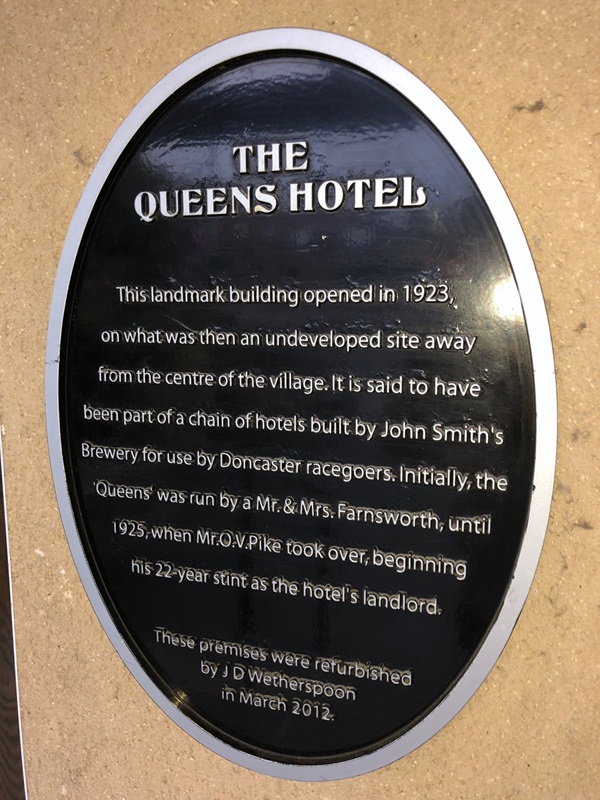
The plaque reads: This landmark building opened in 1923, on what was then an undeveloped site away from the centre of the village. It is said to have been part of a chain of hotels built by John Smiths Brewery for use by Doncaster racegoers. Initially, the ‘Queens’ was run by a Mr & Mrs Farnsworth, until 1925, when Mr OV Pike took over, beginning his 22-year stint as the hotels landlord.
These premises were refurbished by JD Wetherspoon in March 2012.
Photographs and text about The Queens Hotel.
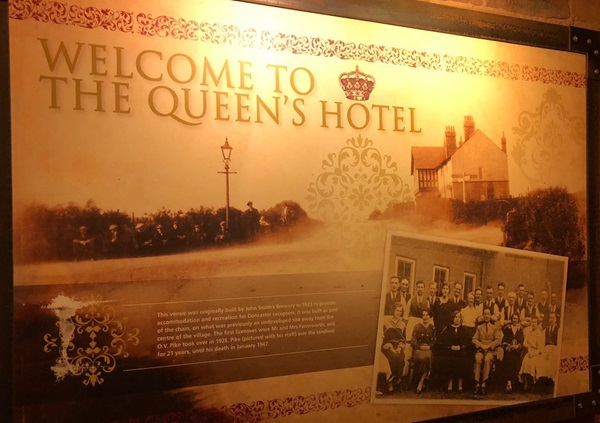
The text reads: This venue was originally built by John Smith’s Brewery in 1923 to provide accommodation and recreation for Doncaster racegoers. It was built as part of the chain, on what was previously an undeveloped site away from the centre of the village. The first licensees were Mr and Mrs Farnsworth, and OV Pike took over in 1925. Pike (pictured with his staff) was the landlord for 21 years, until his death in January 1947.
Photographs and text about Sir Donald Bailey.
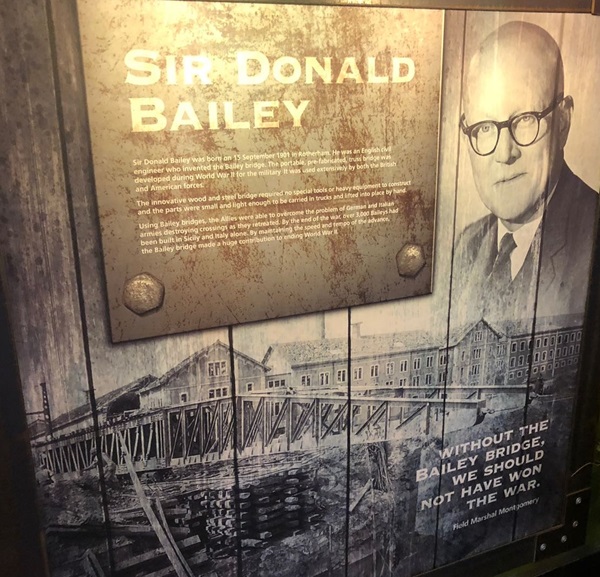
The text reads: Sir Donald Bailey was born on 15 September 1901 in Rotherham. He was an English civil engineer who invented the Bailey bridge. The portable, pre-fabricated, truss bridge was developed during World War II for the military. It was used extensively by both the British and American forces.
The innovative wood and steel bridge required no special tools or heavy equipment to construct and the parts were small and light enough to be carried in trucks and lifted into place by hand.
Using Bailey bridges, the Allies were able to overcome the problem of German and Italian armies, destroying crossings as they retreated. By the end of the war, over 3,000 Baileys had been built in Sicily and Italy alone. By maintaining the speed and tempo of the advance, the Bailey bridge made a huge contribution to ending World War II.
Photographs and text about Doncaster Racecourse.
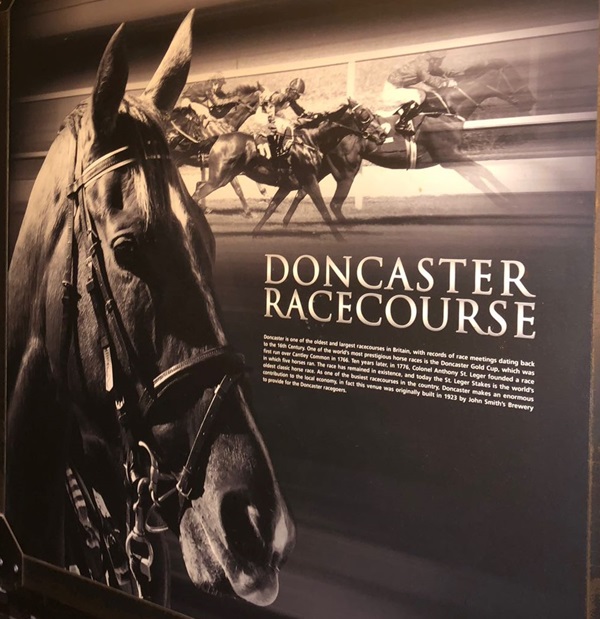
The text reads: Doncaster is one of the oldest and largest racecourses in Britain, with records of race meetings dating back to the 16th century. One of the world’s most prestigious horse races is the Doncaster Gold Cup, which was first run over Cantley Common in 1766. In years later, in 1776, Colonel Anthony St Leger founded a race in which five horses ran. The race has remained in existence, and today the St Leger Stakes is the world’s oldest classic horse race. As one of the busiest racecourses in the country, Doncaster makes an enormous contribution to the local economy, in fact this venue was originally built in 1923 by John Smith’s Brewery to provide for the Doncaster racegoers.
A photograph and text about Coinsbrough Castle.
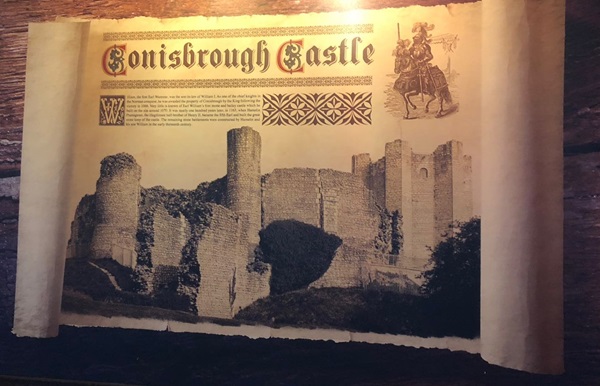
The text reads: William, the first Earl Warenne, was the son-in-law of William I. As one of the chief knights in the Norman conquest, he was awarded the property of Coinsbrough by the King following the Victory in 1066. Very little is known of Earl William’s first motte and bailey castle which he built on the site around 1070. It was nearly one hundred years later, in 1163, when Hamelin Plantagenet, the illegitimate half-brother of Henry II, became the fifth Earl and built the great stone keep of the castle. The remaining stone battlements were constructed by Hamelin and his son William in the early thirteenth century.
A photograph and text about Cusworth Hall.
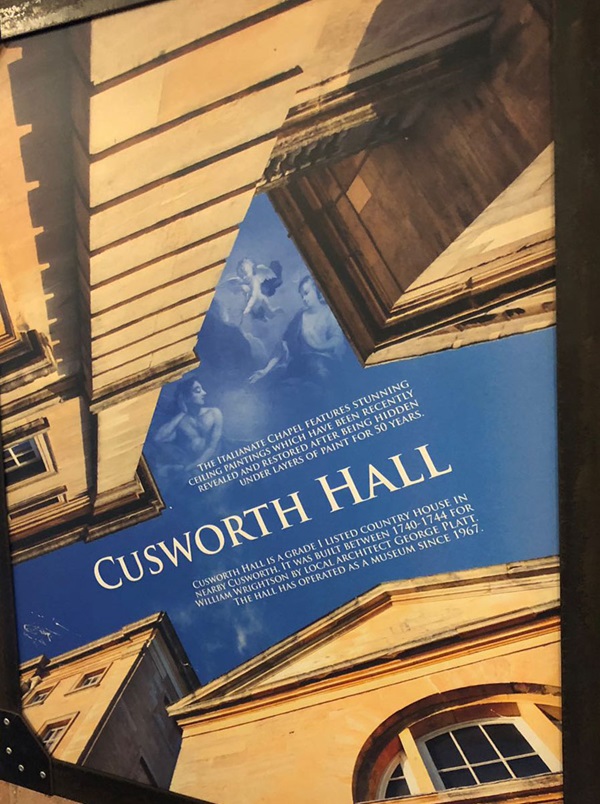
The text reads: The Italianate chapel features stunning ceiling paintings which have been recently revealed and restored after being hidden under layers of paint for 50 years.
Cusworth Hall is a grade I listed country house in nearby Cusworth. It was built between 1740-44 for William Wrighton by local architect George Platt. The hall has operated as a museum since 1967.
A blue plaque dedicated to Frederick Seward Trueman OBE.
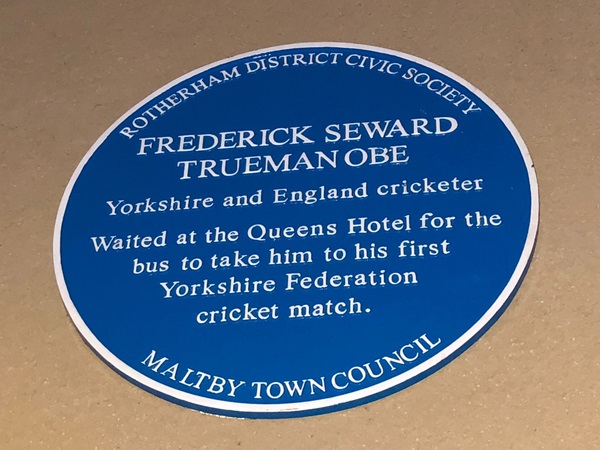
An original sculpture of Fred Trueman by David Webster.
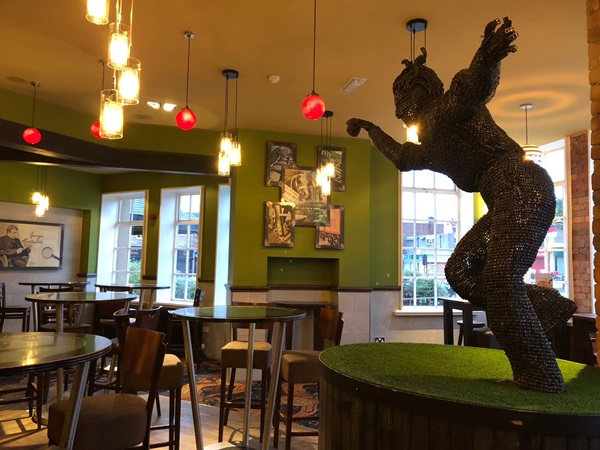
Born in nearby Stainton in 1931, Fred Trueman was one of the greatest fast bowlers to ever play test cricket.
The commissioned sculpture which took almost 3 months to complete is made entirely from bicycle chain. This was done to reflect the regions strong industrial heritage, and the fact that despite his fame, Fred never forgot his roots.
Each section of chain has been carefully woven and wielded together to produce a piece full of movement – that captures Fred’s individual all out bowling action.
External photograph of the building – main entrance.
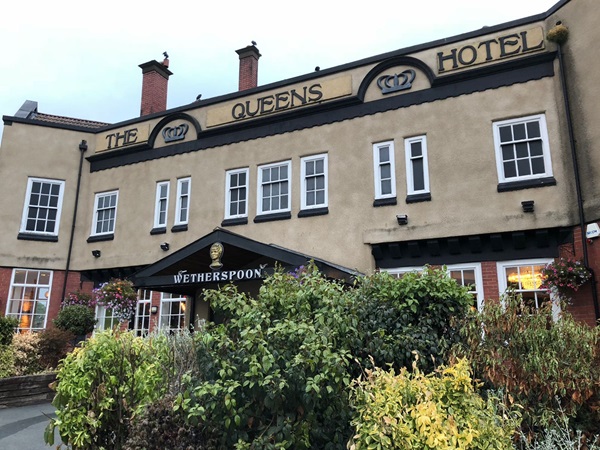
If you have information on the history of this pub, then we’d like you to share it with us. Please e-mail all information to: pubhistories@jdwetherspoon.co.uk